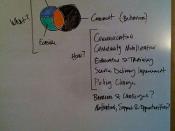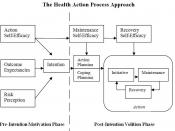The Hersey-Blanchard Situational Leadership theory is based on the amount of direction (task behavior) and amount of socio-emotional support (relationship behavior) a leader must provide given the situation and the "level of maturity" of the followers. Task behavior is the extent to which the leader engages in spelling out the duties and responsibilities to an individual or group. This behavior includes telling people what to do, how to do it, when to do it, where to do it, and who's to do it. In task behavior the leader engages in one-way communication. Relationship behavior is the extent to which the leader engages in two-way or multi-way communications. This includes listening, facilitating, and supportive behaviors. In relationship behavior the leader engages in two-way communication by providing socio-emotional support. Maturity is the willingness and ability of a person to take responsibility for directing his or her own behavior. People tend to have varying degrees of maturity, depending on the specific task, function, or objective that a leader is attempting to accomplish through their efforts.
To determine the appropriate leadership style to use in a given situation, the leader must first determine the maturity level of the followers in relation to the specific task that the leader is attempting to accomplish through the effort of the followers. As the level of followers' maturity increases, the leader should begin to reduce his or her task behavior and increase relationship behavior until the followers reach a moderate level of maturity. As the followers begin to move into an above average level of maturity, the leader should decrease not only task behavior but also relationship behavior.
Once the maturity level is identified, the appropriate leadership style can be determined. This theory is a contingency theory that focuses on followers' readiness/development level of follower and leader behavior/leadership...


